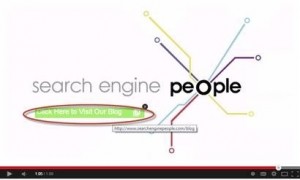 There are a lot of things that can go wrong in a project. Surprises can kill even the best laid plans. Taking the time to conduct a change readiness assessment before you build your project plan can help you “know what you don’t know” so you can nip problems in the bud before they have the chance to derail your project.
There are a lot of things that can go wrong in a project. Surprises can kill even the best laid plans. Taking the time to conduct a change readiness assessment before you build your project plan can help you “know what you don’t know” so you can nip problems in the bud before they have the chance to derail your project.
Change happens to each and every one of us on a regular basis these days. You’d think by now we’d be used to it and just roll with the punches. But that’s not typically the case. Most of us still fight change because it’s something we don’t control.
That’s what you’re up against in many (if not all) of your projects. And that resistance can turn an easy project into a tough one.
A change readiness assessment is a questionnaire that helps identify the current state of the organization or business unit’s capacity for the project being considered. It looks at resources, conditions, and attitudes and reveals areas that may be stumbling blocks for the project. Knowing this information up front can help you identify tasks in your project plan to mitigate issues so the project implementation and transition to the new state goes smoother.
Getting Started
Your first step is to design a survey to collect the information you need. You can conduct the survey via paper or an online tool, but you’ll want to make sure it’s anonymous so you get the frank and honest feedback that will be helpful to your project. There are five key areas to consider.
- Leadership
- Resources
- Culture
- Strategic Direction
- External Drivers
Developing The Assessment
You’ll develop questions or statements for each category along with a scale to determine how challenging each area will be for your project. A simple scale like 1) Strongly Disagree, 2) Disagree, 3) Agree, 4) Strongly Agree works pretty well.
As you develop the items for your survey, it’s helpful to think about those issues that could contribute to project failure. Here are some sample items to get you started.
1) Leadership
- Senior leadership is aligned around the need for the project.
- Senior leadership agrees on the goals of the project.
- It’s clear who is the Executive Sponsor for the project.
2) Resources
- The project team has been allowed appropriate time to work on the project.
- The budget is sufficient to complete the project.
- Time allocated for project completion is realistic.
3) Culture
- Decision making is pushed to the lowest level possible in our company.
- There is a strong hierarchy that makes getting things done very difficult.
- It’s okay for anyone to offer solutions to do things a different way in our company.
4) Strategic Direction
- Everyone in our company understands how this project impacts the long term success of our organization.
- This project aligns with our company’s short term goals.
- Our company is good at sustaining changes over the long term.
5) External Drivers
- It is unlikely that customers will be impacted by this project.
- There are no regulatory issues that will affect this project.
- Trends in the marketplace are pushing us to change.
Conducting The Assessment
If your project will impact an entire organization, you want your assessment to reach as many people as possible. Communicate about the assessment, what its intended purpose is, and what will be done with the results. Allow a few days for people to complete the assessment, but not so long that they forget about it. Typically, three to five business days works well. It’s a good idea to have the timeframe overlap two different weeks to ensure you don’t miss people who may be unavailable during a given week.
Scoring And Interpretation Of The Assessment Results
Once the assessment is complete, review the results for each item. Depending on which category has the greatest percentage of responses – Strongly Disagree to Disagree vs Agree to Strongly Agree – use the information to identify activities that will help your project achieve its intended outcome. Build these activities into your project plan to increase your probability of success.
(212)







